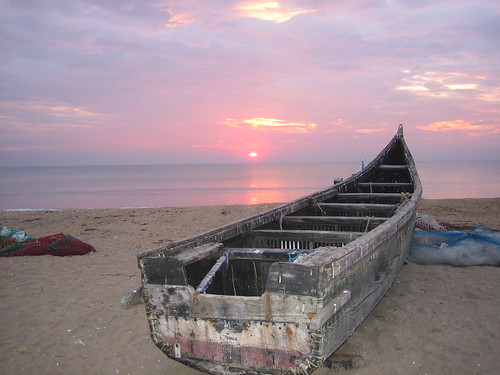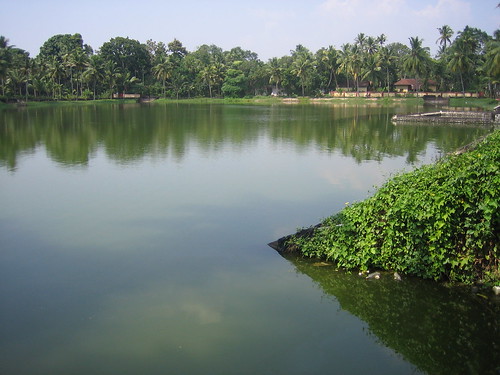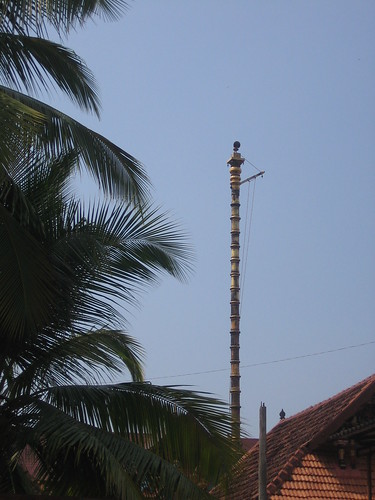Till the Bill Clinton era, India was one notch below Pakistan for United States. From that it moved into a hyphenated equivalence and during the Kargil War and Clinton visit, it was India who had the upper hand. Now with the nuclear deal, there seems to be a lot of suspicion. Strobe Talbott uses the word “Estrangement” to describe the relations between India and United States. The relationship never became cordial due to the Pakistani tilt of the Americans. During the 1971 war with Pakistan, Americans despatched the aircraft carrier Enterprise to show off its force and that did not help relations either. As the relation between the two democracies is progressing through all the navarasas, it was amusing to read that many Americans favoured a good relation between the two countries from the 50s.
One of the first people who suggested that India should be taken seriously was Chester Bowles, who succeeded John Kenneth Galbraith as the US Ambassador to India. Bowles was of the opinion that India should not be seen as an ally of USSR, but as a developing country that had chosen democracy over communism.
After the first Indian nuclear test in 1974, Henry Kissinger visited India as President Ford’s Secretary of State. Even though Kissinger did not like Indira Gandhi much, he admired the way she conducted the nuclear tests. Also in a speech to the Indian Council of World Affairs he called for a mature relationship based on Indian preeminence in the region. He also directed that United States not pressurize India on the nuclear weapons program.
Though powerful people like Kissinger held that opinion, the relationship did not reach any level of maturity that was dreamed of as United States was playing geopolitical games with Russia and needed Pakistan and India was coddling with Communist dictators in the name of Non Alignment.
[Source: Engaging India: Diplomacy, Democracy, and the Bomb by Strobe Talbott]
We agree with Pakistan
While the world has the impression that India and Pakistan are constantly bickering over major and minor issues, there are few instances where both countries speak with the same voice. Unfortunately such incidents do not get much press coverage. One such incident that has come to light is the issue of modernizing United Nations with new management techniques.
Some call what the U.S. is trying to achieve — with significant support from other countries, notably Japan — the GE-ization of the U.N., that is, introducing the modern management mechanisms of global companies. Together the U.S. and Japan provide more than 40% of U.N. funds (the U.S. 22% and Japan 19%). Among the leading opponents are Pakistan, Egypt and India.[John Bolton at the U.N]
Vikramashila University
From the end of the Gupta period in India, religion in India was more into magic and sexual mysticism. This affected even Buddhism and a new branch called Vajrayana appeared in Eastern India in the 8th century and grew in Bihar and Bengal. A version of this branch, modified by local cults and practices was established in Tibet as a result of missions sent from India. The monastery responsible for this was the Vikramasila, in Bihar[13].
The ruins of this monastery is located a few miles away from Bargaon village, where Nalanda University was located.
The Tibetan Taranatha’s description in his work, History of Indian Buddhism, in the early 18th century and other minor historiographical works and from references in the colophons of a number manuscripts recovered from Tibet elaborate Vikramasila was the greatest and most famous educational establishment of the time. This university was located on the right bank of the Ganges where the holy river flows northwards.
It was in the Augustan period of Buddhist Pala kings of Bengal Vikramasila emerged the pre-eminent position in the contemporary educational structure of the then India.
This stately educational establishment had six noble gates, each of which was guarded by a scholar Buddhist monk officer of the university designated ‘Gate-keeper Scholar’ (Dvarapalaka Pandit) who examined applicants to the university. It is said that these entry examinations were so tough that of ten applicants only three gained admission. The university granted the degree of Pandit, equivalent now to Master of Arts.
The fame and prestige of Vikramasila are recorded in Tibetan records. This institution had a large measure of association with the great scholar Dipankara Srijnana (980-1053 AD), who having completed his education at Odantapuri University, became the head of the Vikramasila (1034-38 AD). [The historic Vikramasila Buddhist university]
The Palas, the last major dynasty to champion Buddhism were responsible for the revival of Nalanda University and the massive building programme at Somapura, which is now in Paharpur in Bangladesh.
Sunset, Thalikkulam Beach, Kerala
Sunset, Thalikkulam Beach, Kerala
Temple Pond, Harippad, Kerala
Temple Flag Pole, Harippad, Kerala
Rice Fields, Palakkad, Kerala
A 380 seen at Singapore Airport
Traveling
I am traveling for the next three weeks and so suggestions on how to improve the world will be sporadic. Instead there will be picture updates from random locations till Thanksgiving.





